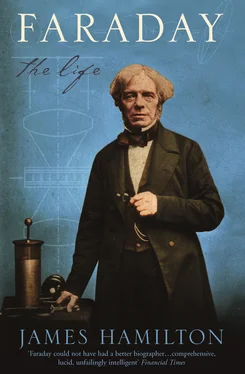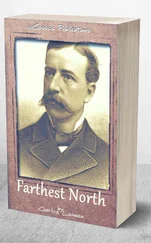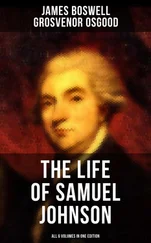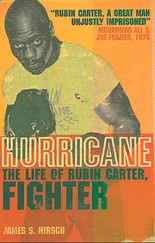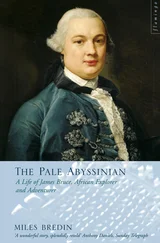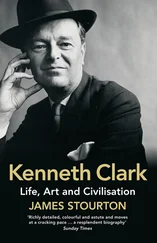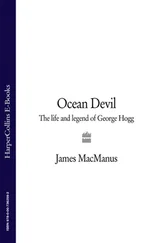They had now turned north up the valley of the Roya. The freezing weather had caused enormous icicles to form where water poured out of the rocks, and many of these had broken off and scattered onto the road, ‘threaten[ing] destruction to the passing traveller’. They had to move them aside to make a way through, but, Faraday wrote, ‘the fragments were often too heavy for me to lift’. 26On Saturday, 19 February, they rose at dawn and girded themselves to make the final climb over the Col de Tende into Italy. Faraday put on an extra waistcoat and two pairs of stockings under the thick leather overalls and shoes which were his travelling garments. Instead of putting it away when he dressed that morning, he kept his nightcap on. He was ready to go.
There was a deep snowfield all around them as they set off. The men they had hired to help them over the mountain were beginning to gather. There would be about sixty-five of them altogether, mountain men from the villages whose job it was to dismantle the carriage and rope it to sledges, and manhandle the lot up to the peak and back down the other side. They whistled and talked, totally familiar with and unimpressed by the dramatic mountainscape, and scaring the travellers with their warnings about avalanches and precipices. Sir Humphry and Faraday kept their nerve by taking readings on their barometer to gauge their height, and discussing the geology. Davy pointed out the micaceous schist, and told Faraday that where there was micaceous schist there was also granite. There were two sedan chairs, one each for Lady Davy and her maid, who both went on ahead. Travellers coming the other way passed them, and the men with the sledges set off at a run, shouting and cheering as they went. The party was soon scattered into groups, Davy and Faraday taking up the rear. They followed the mule tracks, and Faraday stopped to sketch how the mules’ footsteps enlarged and softened as the sun on the snow warmed them. Far ahead in the distance they could see the sedan chairs crawling along a ridge, ‘and a bird soaring below it – the men pointed out to me as an eagle’. 27
By late afternoon they had reached the summit, six thousand feet above sea level.
The view from this elevation was very peculiar, and if immensity bestows grandeur was very grand. The sea in the distance stretching out apparently to infinity. The enormous snow-clad mountains, the clouds below the level of the eye and the immense white valley before us were objects which struck the eye more by their singularity than their beauty, and would after two or three repetitions raise feelings of regret rather than of pleasure. 28
The sledge with the carriage paused at the top, while the foot-passengers and some of the mules went ahead. They had been warned about hollows in the snow, practically invisible on the surface, but nevertheless Faraday slipped many times and found himself up to his chest in snow. One animal and its load were nearly lost – it missed its footing and tumbled over, rolling several yards down the mountain, and had to be dug out and righted by all hands. Looking back, they saw the carriage on its sledge setting off, gathering speed rapidly, with the men running alongside skidding down the mountain, practically out of control. As night fell, they heard the dong, dong of a village bell, and carried on through the snow until they crossed into Italy and reached Limone Piemonte, where they spent the night.
Continuing northwards for two days, they reached Turin during Carnivale. The following day was Shrove Tuesday, and Faraday ‘strolled’ – his word – into the whirling streets in search of a party. Faraday’s stroll in a new town had become a ritual for him, and in Turin he went to the edge of the city and among some trees by the River Po he listened to the bands and watched the dancers spin around the musicians in rings. Between the bands and the circles of ‘ever-moving and never-tired dancers’ were ‘singers, leapers, boxers, chestnut merchants, apple stalls, beggars’, everyday Italian life, enchanted by the excitement and celebration. Faraday then strolled back into town, where he saw the Corso, the even more extraordinary custom of the well-to-do of Turin who despatched their ‘carriages, curricles, saddle horses &c’ to be driven empty for several hours up and down for show, as the crowd looked on.
There were … an immense number of persons who stood on each side of the street looking and gazing with great apparent satisfaction, and who if they had been conscious of the comparison I was then making between the scene before me and the one I had just left would have looked down on me with contempt and derision, no doubt equal at least to that which at the same time occupied my mind. 29
The continental journey was, for Faraday, beginning by now to develop a pattern of its own. Long, weary travelling from town to town was enlivened by ad hoc instruction from Davy, and landscapes and antiquities that he had read or been told about and perhaps never dreamt he would one day see. His Journal record is detailed and engaging, and although scientific subjects are regular themes, they do not dominate. He writes as if he is taking notes (which he probably was), quite as much as making an account for his own future reflection, enjoyment and remembrance.
Davy and Faraday were among the very last of the Grand Tourists, those wealthy Englishmen and their companions who in the decades leading up to the war with France had travelled in their thousands through France and Germany to Italy in search of antiquities and classical learning. Davy’s mission was science, while for Faraday there was an ambivalence about the true aims of the journey. He had scientific duties to perform for Sir Humphry, certainly, but for himself the dividend would not be science but a widening knowledge that it brought him of the depth, richness and pattern of European culture. This came to underpin Faraday’s outlook all his life, and as the decades passed we can see how crucial these eighteen months in Europe were for him, and how they influenced the pattern and direction of his career and achievement.
The character that the Journal most directly evokes is of a receptive young man, talkative, animated, urgent, eager to know, determined to understand, one who happily disregards the discomforts in exchange for the riches that travel will reveal. He is curious about religious practices on the continent, but there is little clear evidence of his own religious beliefs. On his travels this reluctant Sandemanian comes across as a bon viveur who enjoys good food and wine, attending the theatre, dressing up and taking part with enthusiasm in masked balls. He has read his guide books, and is precise in recording details of distance and dimension, as if he too were writing a guide. As a tourist, slogging round the towns he visits on foot, he is energetic and assiduous, keen to find the high point for the panoramic view, eager to visit museums, galleries and gardens, and to watch local celebrations and processions. He does not waste his time. Whether in the marketplace, the inn or the museum, Faraday is curious, and works very hard to feel and to express the textures of the continent, and the customs of the people around him.
All these qualities, which the continental Journal articulated, emerge in their time in Faraday’s later life. The Journal is the seedbed where we can see the shoots of his coming character beginning to poke through. The fact that he wrote it up a second time, the latter part perhaps nearly ten years later, also tells us something worth noting: without making too much of it, Faraday is preserving the young, ebullient Mike for posterity before he is sucked down into adulthood, marriage, responsibility, social conformity, religious non-conformity, decisions, and the perpetual need to earn a living.
Читать дальше
